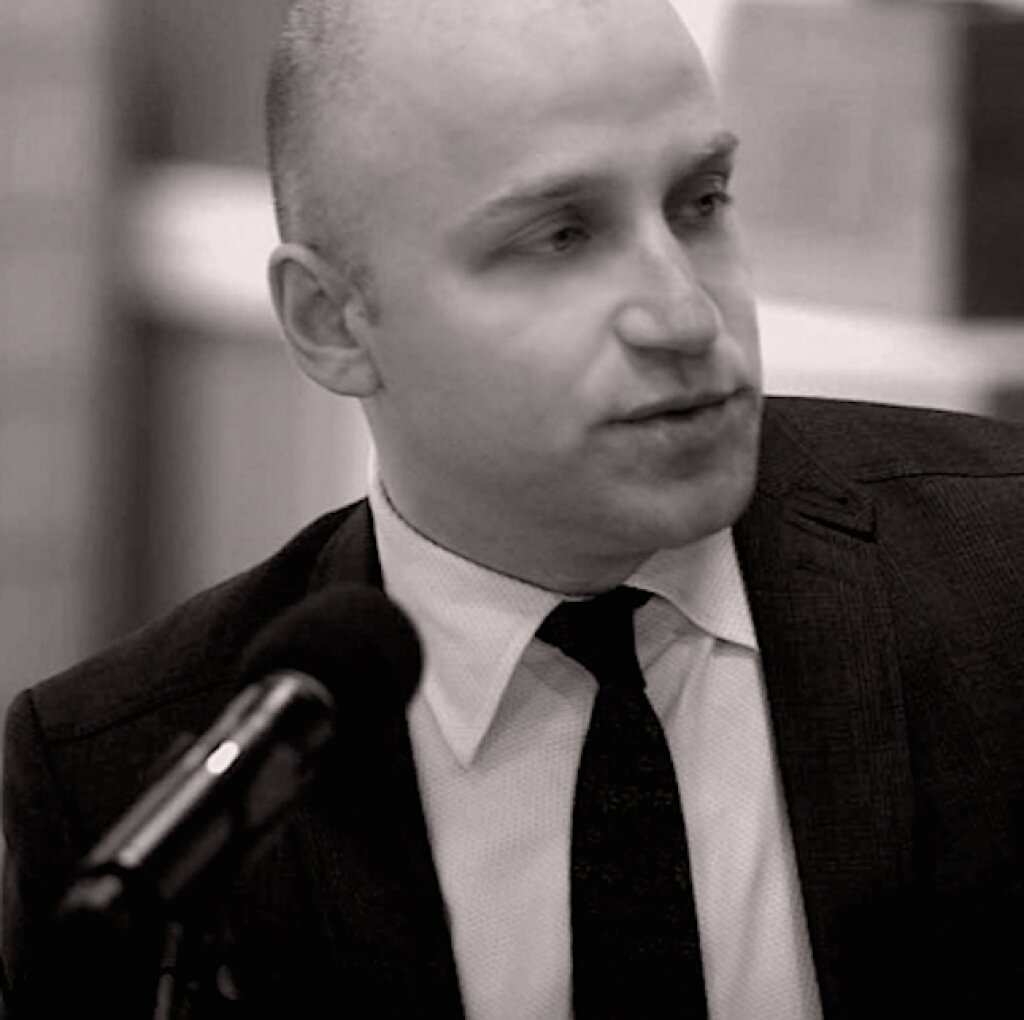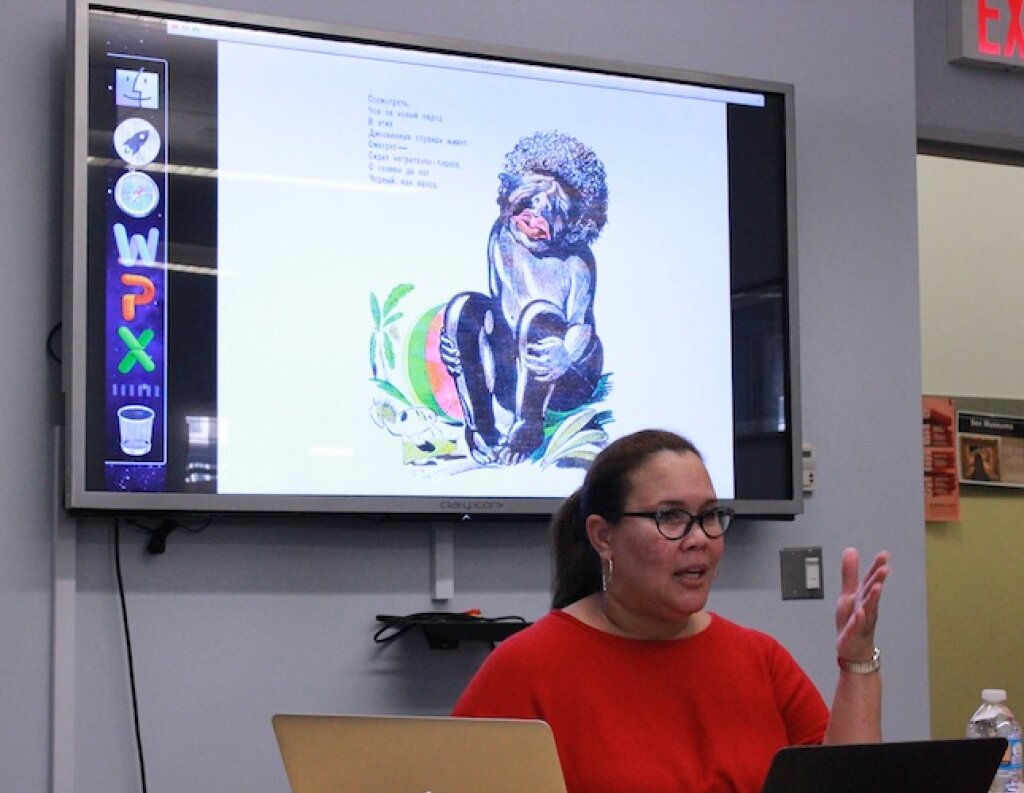Watch the video of the event here
On November 11, 2016, the Jordan Center for the Advanced Study of Russia hosted historians Tatiana Saburova and Ben Eklof of Indiana University. Their talk, introduced by Professor Yanni Kotsonis of NYU and titled “Populist Lives in Revolutionary Russia: Nikolai Charushin, Family and Friends,” was based on their joint book, “Friendship, Family and Revolution: Nikolai Charushin and Populist Networks in Russia, 1851-1937,” which Eklof said took each of them three years to research and write. “We each wrote five of the chapters, and argued over virtually every single piece,” Eklof said.
Nikolai Charushin, the Russian populist intellectual on whom the book centers, was “neither famous nor obscure.” His memoir, one of the most significant primary sources for Eklof and Saburova, is often cited as reflecting his time, but starting in 1930s, Charushin “fell out of the scene.” The main reason the authors chose Charushin as their main character, they explained, is that his life trajectory allowed them to see the part of history between the late 19th century and high Stalinism and reflect on its themes.
On the one side the book is sort of a biography; not just of Charushin but also his wife Anna Kuvshinskaia. But it is also more than these two individuals. The authors look at the genre of biography from a different perspective; they define the book as a cross between a collective biography, personal history, micro-history; they try to tell the story of Russian society and intelligentsiia, of the different political, cultural and social institutions of the Russian Empire to see how we can understand what happened then and after the collapse in 1917. The approach of generational history, of which many historians are skeptical, did have its difficulties for the authors: it’s elusive and hard to define. Did this “generation” really exist, or was it an imagined community? For Eklof and Saburova it’s both. They define the generation as people who had the common social political experience. But it was also imagined in that in early Soviet Russia this cohort tried to create the image of this generation and use it to strengthen their social image. Saburova also noted the importance of memory studies, as the authors used social/collective memory to explain the identity base of their characters.
The book begins with Charushin’s birth (1885) and childhood, trying to answer the question of how one becomes a revolutionary. Although the authors did not come up with a definitive answer, they found that Charushin and his friends, by virtue of their birth and education, were guaranteed an income and place in society, as evidenced by many of their school friends becoming military and political readers, but they chose a different path that included exile and imprisonment.
Charushin and Kuvshinskaia’s education in St. Petersburg in technological school and medical courses respectively ended when they were caught in revolutionary circles, namely the Chaikovskii Circle. The authors distinguish Charushin and his generation in that “they thought every step of the way should be governed by ethical principles that guided their whole lives.”
Saburova said that the question of women revolutionaries was very important to her in writing the book. She found that the many stereotypes of female revolutionaries, many of whom became icons, “such as that they refused to have a regular family life or children, were lonely and ugly, or unfeminine,” were unfounded. “We wrote about the gender roles for these men and women,” Saburova said. “Many ideas of feminism were important to them. Many women tried to be even more active than men and encouraged them to be braver, at the same time doing traditional female domestic work.” Eklof added that a lot of this research was based in the large correspondence about their private lives, much of which was “very emotional and colloquial.”
Photo: The Chimadanova family of the cohort of populists. "Their relationship started as a fictive marriage, but turned into a real one with 10 children" the authors said.
The next chapter in the book deals with the movement itself, which was very short-lived because most members were arrested and sent to long years of hard labor in exile. They were brought to trials and the courts allowed them public hearings, where they gained popularity. This chapter was written from the point of view of anthropology of imprisonment, Eklof noted, as this mattered to their generational formation. “It was very important for us to understand how they experienced this time” emphasized Saburova.
Following is the story of the 17 years of exile of Charushin and Kuvshinskaia, who was influenced by the Decemberists in following her husband into exile. The authors note that for Charushin and his circle, Siberia was a foreign country, not Russia. Many of them participated in many scientific expeditions there, becoming professional photographers. During this time the government had to rely on them as educators because of the shortage.
Charushin became quite famous after his trip to Mongolia. Here Eklof explained that although the indigenous people of the region were common people, they weren’t seen as such; they were the other, exotic. Tips for photos as the one seen above were taken from the British Empire and elsewhere in the West.
Charushin’s memoirs that were left behind all ended with their life in Siberia; “they didn’t think the rest was worth recording.” After his return to Moscow, Charushin became an insurance seller, and later he founded a newspaper, “but also defined himself as a revolutionary.”
When the Romanov dynasty fell, Charushin and his generation of populists welcomed the fall of autocracy and the Provisional Government, but the authors also found in their correspondence “a lot of ambivalence and worry about this period.” Charushin tried to resist Bolshevik rule and was arrested four more times during the Civil War as a prized prisoner. In Eklof’s explanation, he continued to refuse to accept the legitimacy of the Bolshevik government but agreed to submit to it. Saburova, in turn, said that Charushin and his group were perhaps in some ways responsible for what happened, “which for us was a chance to explore the alternatives to 1917.” The populists, after all, were part of a movement that won the majority of the vote the one time Russia held free elections before Gorbachev. But the distinctions between party affiliations were blurred. In his writing, Charushin expressed great despair at the indifference of the population, for which he worked for much of his life.
In Soviet Russia, Charushin had a new activity: he became a librarian. Many of his age cohort started to write memoirs at this time. These became part of a collective narrative and memory, as they tried to defend and preserve the memory and image of their generation. Saburova pointed out that the line per line plagiarism they found in these memoirs suggests that in repeating themselves they tried to form a coherent general history. However, by the 1940s this generation of populists were erased from memory by Stalinists, ridiculed for being senile and never having achieved anything.
The question of what to do with Charushin’s home, whether to tear it down or memorialize it as a house-museum, was part of the reconsiderations of 1989. “The huge fight that broke out in the newspaper and the language of the correspondence tells us a lot about the Soviet intelligentsia of that time and how they discussed the past and the ethical questions of their age,” Saburova said.
Overall, the authors said, their argument is that the lives Charushin and his cohort lived were radically different from what people experienced under communism, especially in their insistence on ethical principles guiding their political lives: “They presented an alternative to not only Soviet experience but capitalism. Their story became a story of the identity of the Russian intelligentsia, which doesn’t end with Charushin’s life.”
In the Q&A session that followed, Anne Lounsbery, Associate Professor of Russian and Slavic Studies at NYU, wondered if Charushin and his cohort actually used the word generation and were aware of themselves as such. Saburova said that they did, although mostly retrospectively; “they realize they were a generation in the 1870s when looking at it from the 1920s.”
Asked what was distinct about this populism from the classical populism of Lavrov, the authors reminded that this generation did not call themselves populists, but socialist revolutionaries. But their identity markers were also a subject of discussion, they argued who they were vis-a-vis Lavrov. They were also affected by people who wrote about the peasantry and Marx’s first volume of Capital, the authors said.
On the question of how someone could be a revolutionary and a librarian, the authors explained that by 1920s, Charushin “had given up.” He had freedom in exchange for his non-involvement in politics, and in addition he was old. Nevertheless, according to the authors, this generation of populists didn’t see any contradiction between their professional activity and their political identity as revolutionaries. Yanni Kotsonis, Professor of History and Russian and Slavic Studies at NYU, also remarked that Charushin and friends “lost the revolution.”





